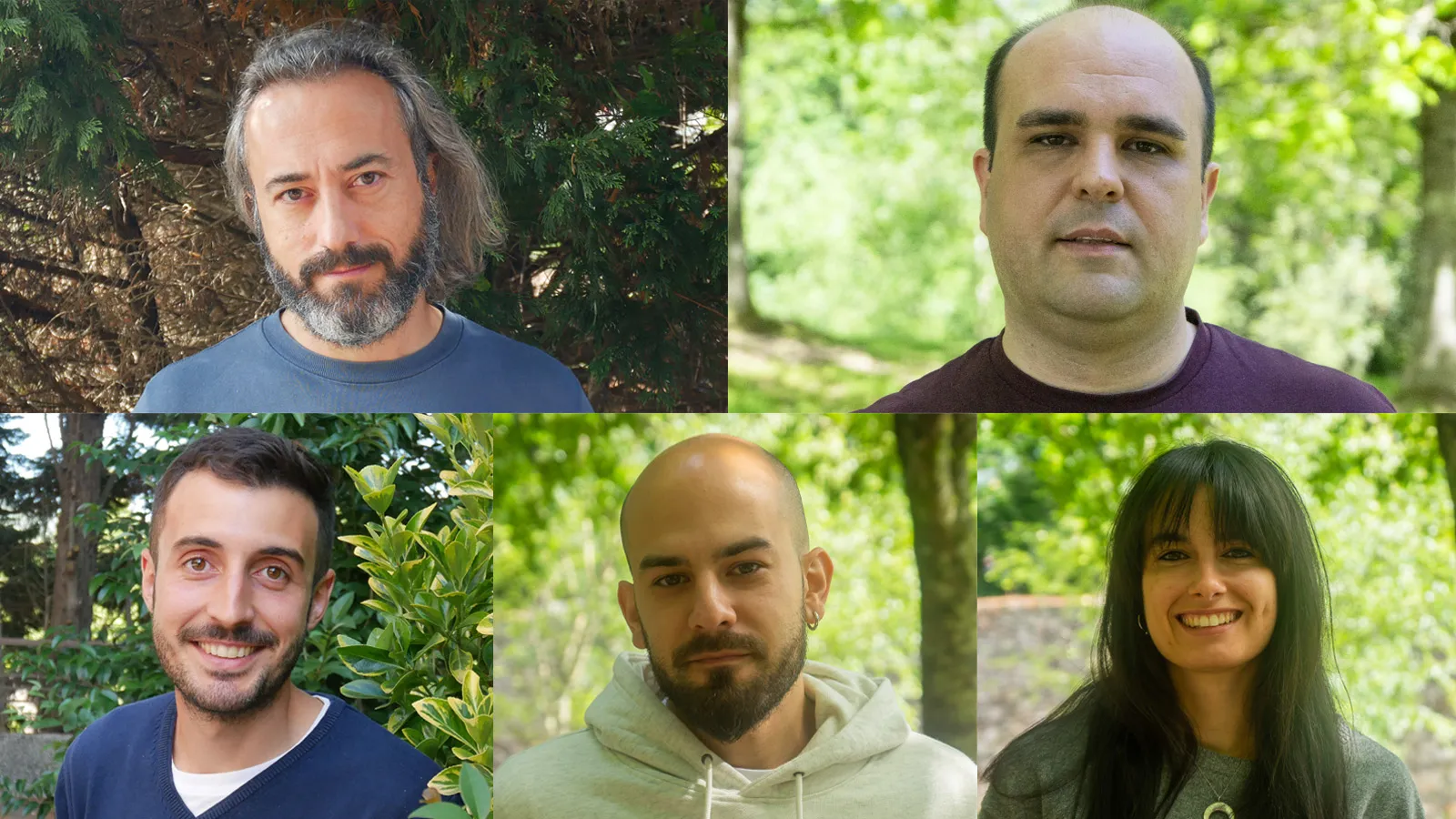‘Nature’ publica un traballo pioneiro sobre fisión nuclear no que participa o IGFAE



19.06.2020

O Consello do CERN anunciou hoxe a actualización de forma unánime da estratexia destinada a guiar o futuro da física de partículas en Europa dentro do panorama mundial. As recomendacións destacan o impacto científico da física de partículas e o seu capital tecnolóxico, social e humano (documento dispoñible aquí).
A actualización de 2020 da Estratexia Europea de Física de Partículas propón unha visión para o futuro da disciplina a curto e a longo prazo, a cal mantén o papel de liderado de Europa en física de partículas e nas innovadoras tecnoloxías que se desenvolven neste campo da ciencia.
As prioridades científicas son o estudo do bosón de Higgs e a exploración da fronteira das altas enerxías: dúas formas cruciais e complementarias de afrontar os interrogantes abertos en física de partículas.
“A Estratexia está impulsada sobre todo pola ciencia e, por tanto, presenta as prioridades científicas para o campo”, declara Ursula Bassler, presidenta do Consello do CERN. “O Grupo para a Estratexia Europea, un órgano especial creado polo Consello, conduciu con éxito a reflexión estratéxica á que contribuíron centenares de físicos europeos”. A visión científica plasmada na estratexia debe servir como unha guía para o CERN e facilitar unha política científica coherente en toda Europa.
A finalización exitosa do LHC de Alta Luminosidade na próxima década, cuxos traballos de preparación están a levarse a cabo actualmente no CERN, debe seguir sendo o eixo central da física de partículas europea.
A estratexia subliña a importancia de incrementar a I+D en tecnoloxías avanzadas de aceleradores e detectores, así como de infraestruturas de computación, como un prerrequisito necesario para todos os proxectos futuros. A realización do futuro programa de investigación a curto e longo prazo previsto nesta actualización da Estratexia require unha I+D centrada e transformadora, que ten tamén moitos beneficios potenciais para a sociedade.
O documento destaca a necesidade de conseguir unha ‘factoría de Higgs’ electrón-positrón como a instalación de maior prioridade tras o Gran Colisorde de Hadróns (LHC). Este futuro acelerador de partículas podería implementarse en menos de dez anos tras a explotación completa do LHC de Alta Luminosidade, que se espera finalice as súas operacións en 2038. Un colisor electrón-positrón permitiría medir as propiedades do bosón de Higgs con gran precisión. O bosón de Higgs foi descuberto no CERN en 2012 por científicos que traballaban no LHC, e espérase sexa unha poderosa ferramenta para buscar física máis aló do Modelo Estándar.
Outra recomendación significativa da Estratexia é que Europa, en colaboración coa comunidade internacional, realice un estudo de viabilidade para un colisor de hadróns de nova xeración coa enerxía máis alta alcanzable, en preparación para o obxectivo científico a longo prazo de explorar a fronteira das altas enerxías, cun colisionador de electróns- positrones como posible primeira etapa.
Recoméndase ademais que Europa siga apoiando proxectos de física de neutrinos en Xapón e Estados Unidos. Tamén é importante a cooperación coas disciplinas científicas próximas, como a física de astropartículas e a física nuclear, así como a colaboración con países non europeos.
“Esta é unha estratexia moi ambiciosa, que describe un futuro brillante para Europa e para o CERN cun enfoque prudente e graduado. Continuaremos investindo en programas de colaboración fortes entre o CERN e outras institucións de investigación nos Estados membros e outros países”, declara a Directora Xeral do CERN, Fabiola Gianotti. “Estas colaboracións son clave para o progreso científico e tecnolóxico sostido, e achegan moitos beneficios á sociedade”.
“O seguinte paso é explorar a viabilidade das recomendacións, mentres continuamos aplicando un programa diverso de proxectos de alto impacto”, explica a presidenta do Grupo para a Estratexia Europea, Halina Abramowicz. “Europa debe manter a porta aberta a participar noutros proxectos que sirvan ao campo no seu conxunto, como o proxecto International Linear Collider proposto”.
Máis aló do retorno científico inmediato, as grandes infraestruturas científicas como o CERN proporcionan un gran impacto na sociedade relacionado co capital tecnolóxico, económico e humano. Os avances en aceleradores, detectores e computación poden ter un impacto significativo en áreas como as tecnoloxías médicas e biomédicas, aplicacións aeroespaciais, en patrimonio cultural, intelixencia artificial, enerxía, big data e robótica.
En termos de capital humano, a formación de mozos científicos, enxeñeiros, técnicos e profesionais diversos é unha parte esencial dos programas de física de altas enerxías, proporcionando unha fonte de talento para a industria e outros campos da sociedade.
A estratexia tamén destaca outros dous aspectos importantes: o medio ambiente e a importancia da Ciencia Aberta. “O impacto ambiental das actividades en física de partículas debe continuar sendo coidadosamente estudado e minimizado. Un plan detallado de redución do impacto ambiental e para o aforro e reutilización enerxética debe formar parte do proceso de aprobación de calquera gran proxecto”, di o informe. As tecnoloxías desenvolvidas en física de partículas para reducir o impacto ambiental das instalacións futuras poden tamén atopar outras aplicacións máis xerais na protección do medio ambiente.
A actualización da Estratexia Europea de Física de Partículas anunciada hoxe iniciouse en setembro de 2018, cando o Consello do CERN, formado por representantes dos Estados membros e asociados, estableceu un Grupo para a Estratexia Europea (ESG, polas súas siglas en inglés) para coordinar o proceso. O ESG traballou en estreita unión coa comunidade científica. Preto de duascentas propostas discutíronse durante un Simposio Aberto en Granada en maio de 2019 para dar forma ao Physics Briefing Book, un resumo das propostas da comunidade preparado polo Grupo Preparatorio de Física. O ESG converxeu nas recomendacións finais durante unha sesión de elaboración do documento final dunha semana en Alemaña en xaneiro de 2020. Os resultados, que foron presentados ao Consello do CERN en marzo e cuxo anuncio estaba previsto o 25 de maio en Budapest, pero foi aprazado pola situación global da Covid-19, puxéronse hoxe ao dispor do público.
Participación española na Estratexia Europea de Física de Partículas
As propostas da comunidade científica española á Estratexia Europea de Física de Partículas coordináronse a través da Rede Consolider CPAN, onde participan os principais centros de investigación españois neste campo. En particular, Antonio Pich (Universidade de Valencia, Instituto de Física Corpuscular) e Teresa Rodrigo (Instituto de Física de Cantabria), foron os coordinadores da posición española. No Grupo Preparatorio de Física participaron Belén Gavela (Instituto de Física Teórica) e Caterina Biscari (ALBA), como membros do Comité de Política Científica do CERN. Ademais, no Grupo para a Estratexia Europea participaron Nicanor Colino (CIEMAT) e María José García Borge (Instituto de Estrutura de la Materia, IEM-CSIC), representante da subárea de Física de Partículas e Nuclear da Axencia Estatal de Investigación (AEI), do Ministerio de Ciencia e Innovación.
Máis información:
https://europeanstrategy.cern/https://home.cern/sites/home.web.cern.ch/files/2020-06/2020%20Update%20European%20Strategy.pdf